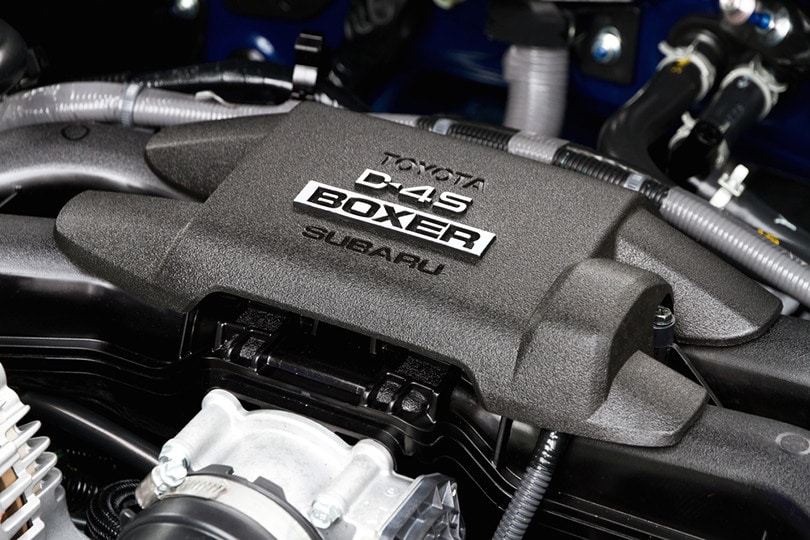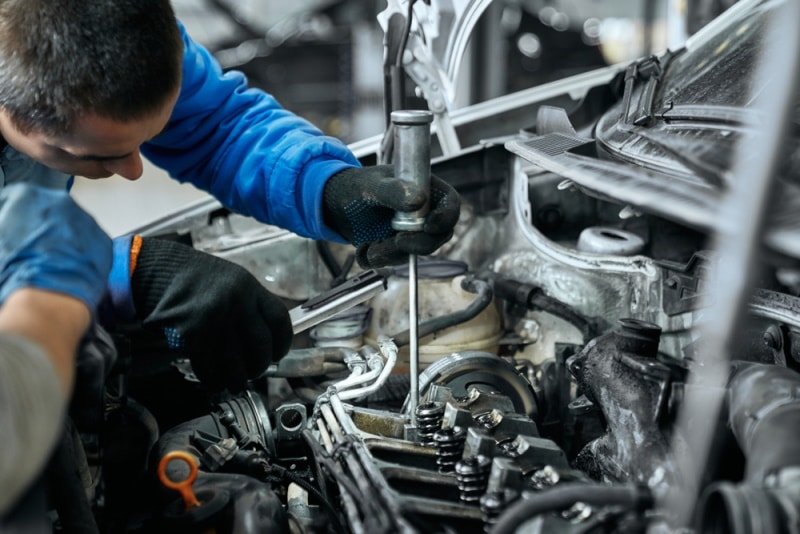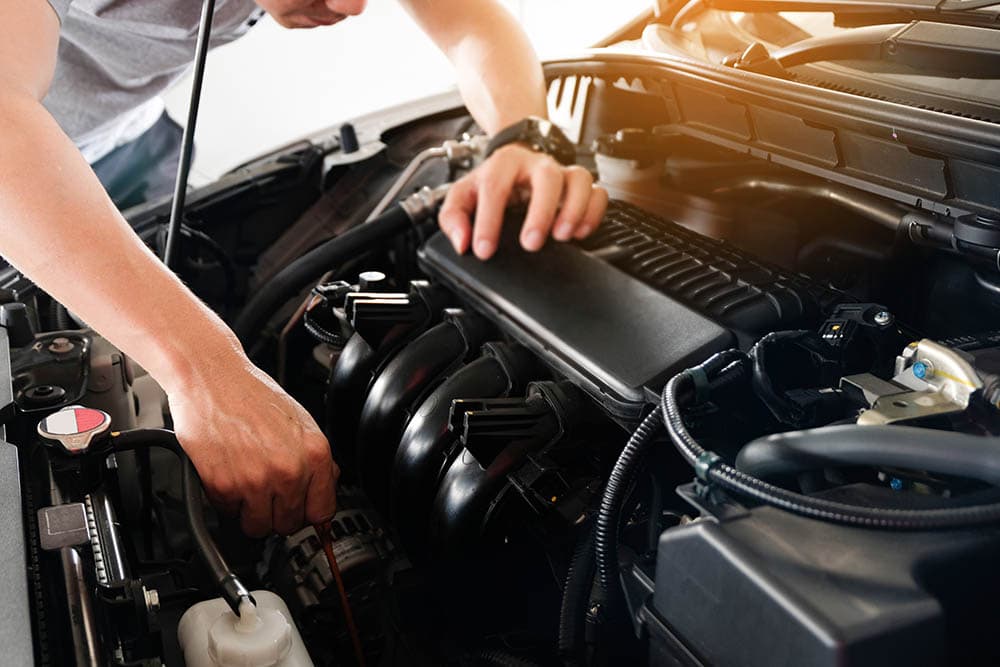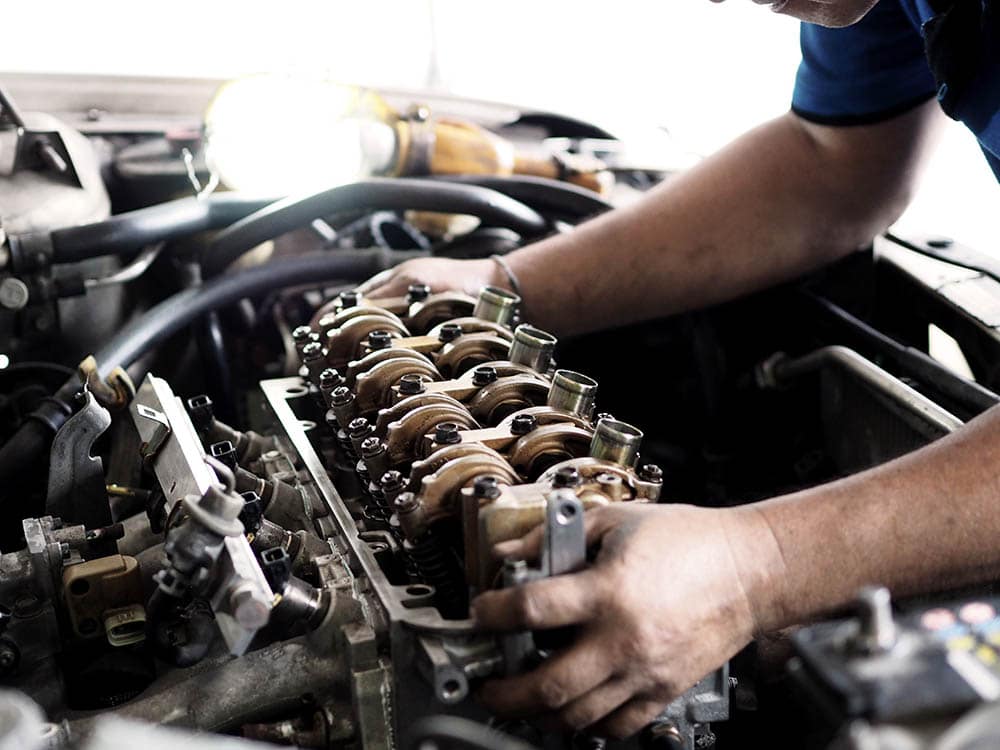How Long Does It Take for an Engine to Cool Down? Reasons, Facts & FAQ
-
Pete Ortiz
- Last updated:

Engines overheat; that’s just what happens sometimes. Even if you’re driving a brand-new vehicle and take proper care of the motor, it might give up on you at any moment. The key here is to be ready for it. Chances are, the problem isn’t even that serious. But wait: how long does the engine take to cool down?
While it depends on the car, 30 minutes should be enough on average. Why do vehicle motors overheat, though? Is that a normal thing? Should you keep driving when that happens, or call for a tow truck? How do you make the engine last longer? What’s the average lifespan? Read on, and you’ll find out!
Why Do Engines Overheat in the First Place?

The most common cause of overheating is a faulty cooling system. Here’s how it works: the water pump pushes the antifreeze through the cylinder chamber. The coolant absorbs all the heat generated by the cylinders and flows directly into the radiator, which, in turn, cools the liquid down. The grill lets cold air in, and that’s how the coolant temperature is reduced. The cycle then repeats, keeping the engine from blowing up.
When the coolant is contaminated or when there isn’t enough of it in the tank, the efficiency of the system drops dramatically. The same is true when the radiator is malfunctioning, the hose is clogged, or there’s a leak somewhere. If you see steam emerging from the hood, notice a sweet odor, or the engine gauges “go crazy”, that means the motor is overheating.
What Do Safe Engine Temperatures Look Like?
Even if the cooling system is operating like clockwork, the engine will still get hot. This is true for both gas-powered and diesel engines, by the way. Gas engines are a lot hotter, though (1.4K°F. vs. 500-800°). A properly cooled motor will only reach 150–200 degrees F. And as long as the coolant and the radiator are doing their job, there’s nothing to worry about here.
Pay attention to the dashboard. It takes the engine 1–2 minutes to reach 150 degrees. On the gauges, extreme left and right markings indicate abnormally low and high temperatures. And when the needle is in the middle, that means the engine is running at normal temperatures. In some vehicles, the engine might not even get that warm. Don’t let this bother you. Instead, keep an eye out for any unusual spikes.
What’s the Average Cool Down Time?
Once you turn the engine off and park the car (preferably somewhere with no direct exposure to the sun), it will take the motor 30 minutes to cool down. That’s a close estimate, of course, and it varies depending on the engine model, its mileage, and other factors, including how hot/cold it is outside. Aluminum blocks are quicker to cool down; cast iron blocks, in turn, are more resistant to extreme heat.
In any case, let the engine rest for half an hour and carefully touch the hood. If it’s cool, go ahead and pop it. And if it’s been almost an hour and the hood is still hot, there’s something seriously wrong with the car. The best thing to do here would be to call a tow truck. It’s always better to play it safe instead of trying to fix the engine on your own and make matters worse (like hurting yourself, for example).

Can You Drive With an Overheated Engine?
The worst thing any driver can do in this situation is to keep their foot on the gas pedal. An overheated engine is a disaster waiting to happen, and the longer you run it, the quicker the cylinder heads will warp. The head gasket will be the next “victim”. If you don’t stop the car, then the engine will literally start melting, putting extra pressure on the exhaust system.
- Find a safe spot and turn the motor off. Make sure you’re parked away from a busy road. Use traffic cones to notify oncoming vehicles. Resist the urge to drive to the nearest parking lot or repair facility, even if it’s two minutes away, as you’ll risk ruining the engine.
- Open the windows. The sooner the heat dissipates into thin air, the better. That’s why it’s recommended to open every single window in the car. Or, better yet, keep the doors open as well. Some experts even recommend opening the trunk.
- Pop the hood. With the hood open, the heat will escape much quicker. However, you need to be VERY careful. Only open the hood when you’re 100% sure the engine is cool. Otherwise, the boiling steam or coolant can harm you! Not sure you’re up for it? Then let a pro handle this.
- Inspect the hoses. If you’re lucky, coolant leaks are the issue here. If so, replace the hose(s) once the engine is safe to touch. This will only take 10–15 minutes to do.
- Replenish the coolant tank. No leaks? Well, maybe the antifreeze levels are too low. Topping it off should do the trick. So, remember to keep a can of coolant in the trunk.
- Crank the heater up. That will help dissipate some of the heat generated by the engine. You might want to exit the car right after doing this. The AC, in contrast, needs to be shut off immediately, as it’s only going to make the engine work harder.
- Call a tow truck. If none of this helps, just have a tow truck deliver your car to the closest auto repair shop. Don’t try anything in an attempt to repair the engine before the truck arrives!
- Call a mechanic. This will cost more than a tow truck, of course, but the mechanic might be able to fix your vehicle right there and then. However, if you’re dealing with a bad radiator or water pump, most likely, they’ll recommend towing the car to a repair shop.
How Long Do Engines Last?
On average, modern-day motors can go on for up to 200–250K miles, which equals 10–12 years. According to the NY Times, some exceptionally well-maintained engines can last for up to 500K miles! Back in the day, 150K miles/8 years used to be a very decent lifespan for an engine. These days, thanks to heated competition on the market (and forward-thinking technology, of course), you can expect at least a decade of hassle-free service.
And we’re not even talking about expensive, custom-made cars or anything like that. With the focus of the automobile industry shifting towards affordable sedans, SUVs, and trucks, engines are now a lot more durable and reliable. Speaking of brands, Toyota, Honda, and Chevrolet make some of the best motors out there—keep that in mind next time you go shopping for a new car! For maximum longevity, pick an electric motor.

Engine Maintenance 101: Tips for Increasing the Lifespan
So, how do you take proper care of the engine? The answer is very simple: routine maintenance. There’s nothing hard about this! First, make a habit of changing the oil every 5–7.5K miles and the coolant every 30–35K miles. That alone will make a huge impact on the motor’s performance. Regular inspections by a licensed mechanic (at least once in 1–2 years) are also mandatory.
Auto shops charge $150–250 for a thorough checkup. While it will be cheaper to only have the engine checked, we would still recommend doing a full inspection. That’s because the mechanic might reveal problems with the transmission system, radiator, or brakes that will cost a lot more to fix in the long run (and can potentially damage the motor).
- The radiator cap. The first thing to inspect is the cap, or, rather, how tight it is. When it’s not sealed properly, that allows air to leak into the radiator. As a result, you’ll have so-called “air pockets” in the system, notoriously known for making the engine overheat.
- The hose and the tank. While you’re busy with the radiator, don’t forget to check on the hose and the reservoir tank. If there are signs of wear on the hose, don’t start the engine before you replace it. As for the tank, see if it has any cracks.
- The radiator comes next. In most cars, the radiator is installed right behind the A/C condenser. So, whenever it gets clogged with dust, pollen, and debris, the airflow gets compromised, which, eventually, equals a temperature boost in the engine.
- Check the coolant level. To keep the motor nice and cool, the coolant needs to be fresh. In addition, antifreeze levels should always be high to adequately cool the engine. Don’t close the hood just yet: check on the oil levels as well. It might be that the engine isn’t getting enough lubrication, and that’s why it’s heating up.
 Conclusion
Conclusion
Car engines take time and money to repair. That’s why it’s so important to always keep your eyes on the gauges and stop the vehicle whenever you see temperature spikes. While it can ruin your plans by breaking down in the middle of nowhere, you should never drive with an overheated motor. Shut the engine, wait for around 30 minutes, and pop the hood.
If you’re lucky, the issue will be easy to fix. If not, call a tow truck and head straight to the closest auto repair shop. Oh, and don’t forget to follow our guide on motor maintenance. After all, the best way to minimize the risk of overheating is to keep the engine in shape!
- How Much Does It Cost To Have A Mechanic Inspect A Used Car?
- KelleyBlueBook – How Often Should I Change My Oil?
- NYTimes – 533,000 Miles and It Runs Like a Top
- ErieInsurance – What To Do When Your Car Overheats
- WHAT TO DO (& NOT DO) WHEN YOUR CAR OVERHEATS
- GoodYear – What to Do if Your Car Is Overheating
- How Long Does It Take for a Car to Cool Down?
- Should I Worry About How Hot My Engine Is Running?
- Jerry – How long do car engines last?
Featured Image Credit: Teddy Leung, Shutterstock
Contents


